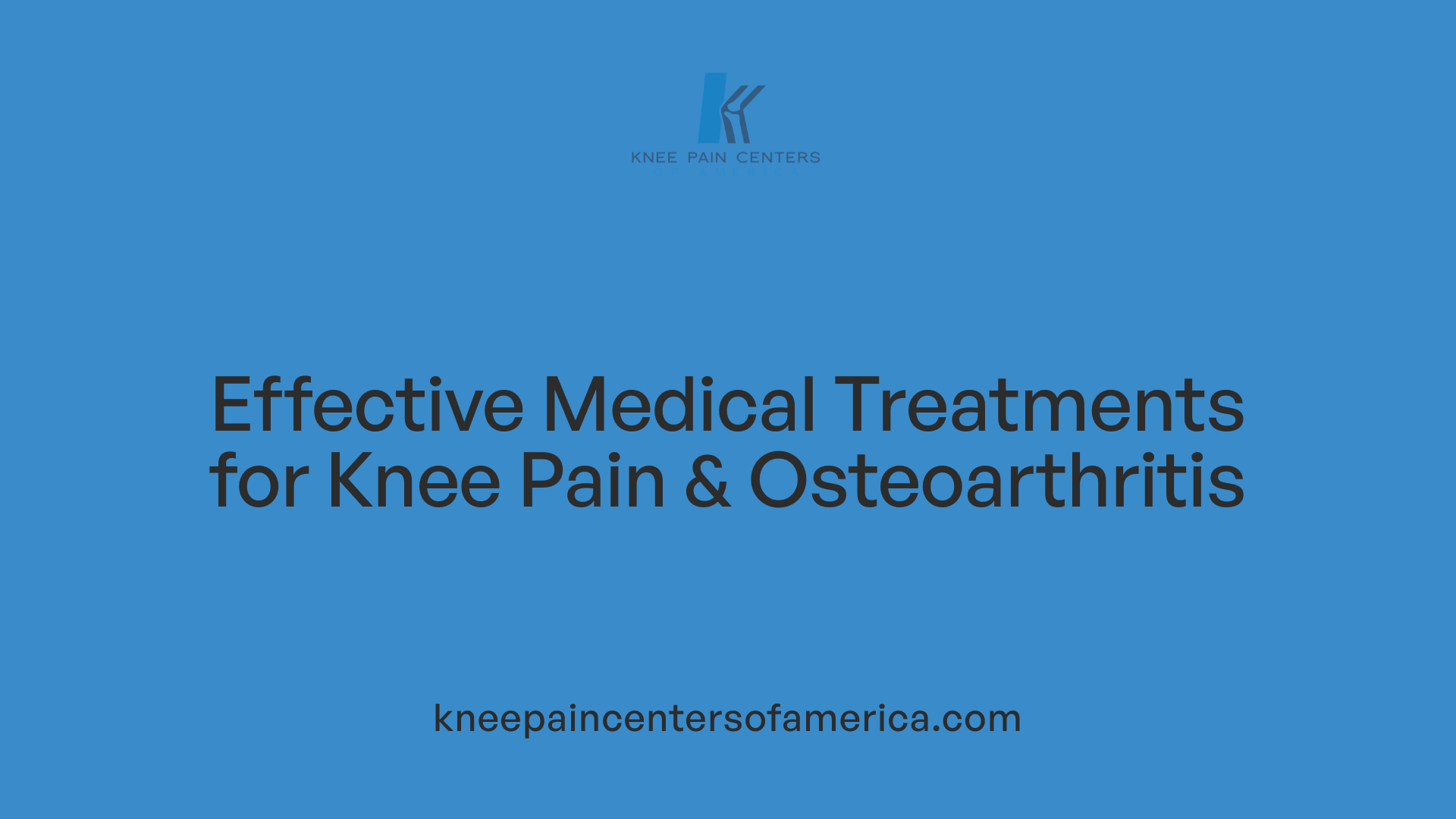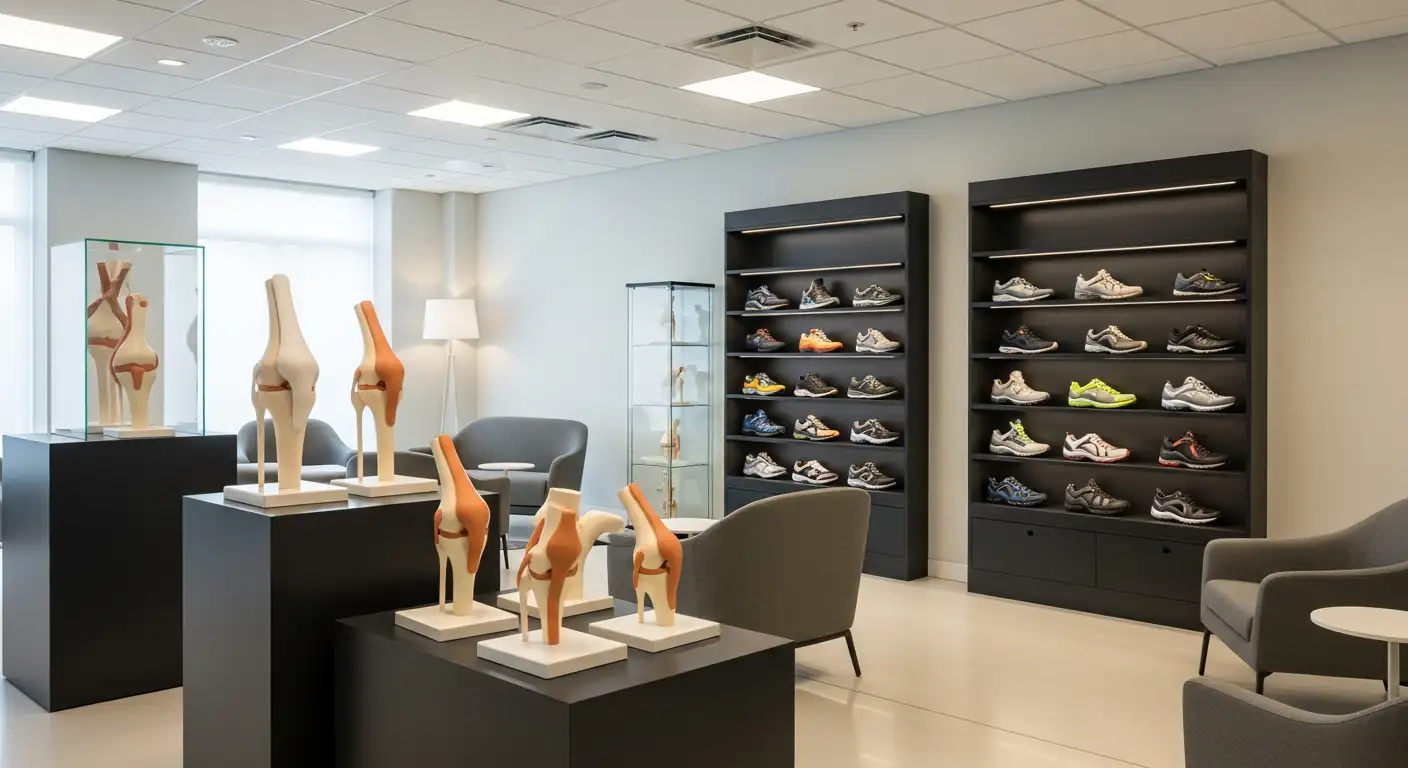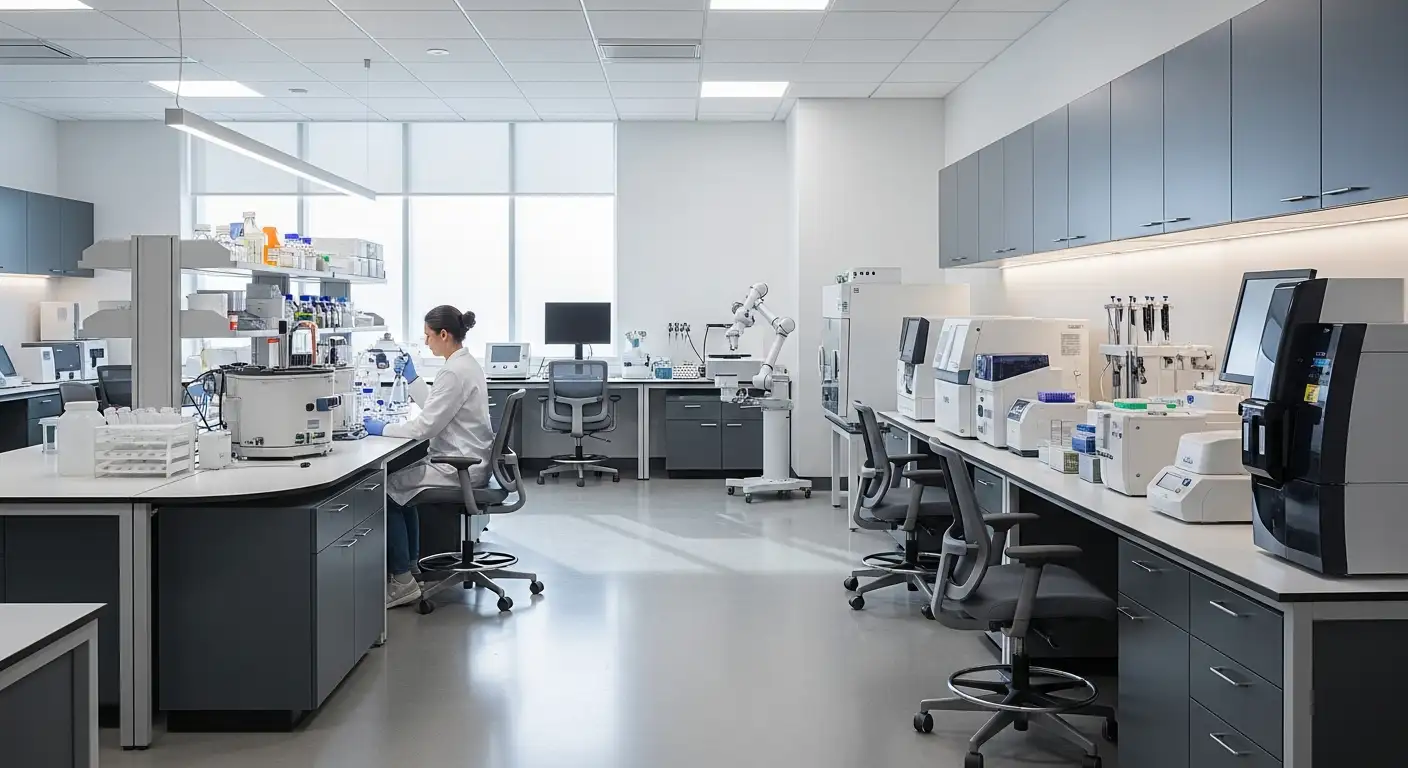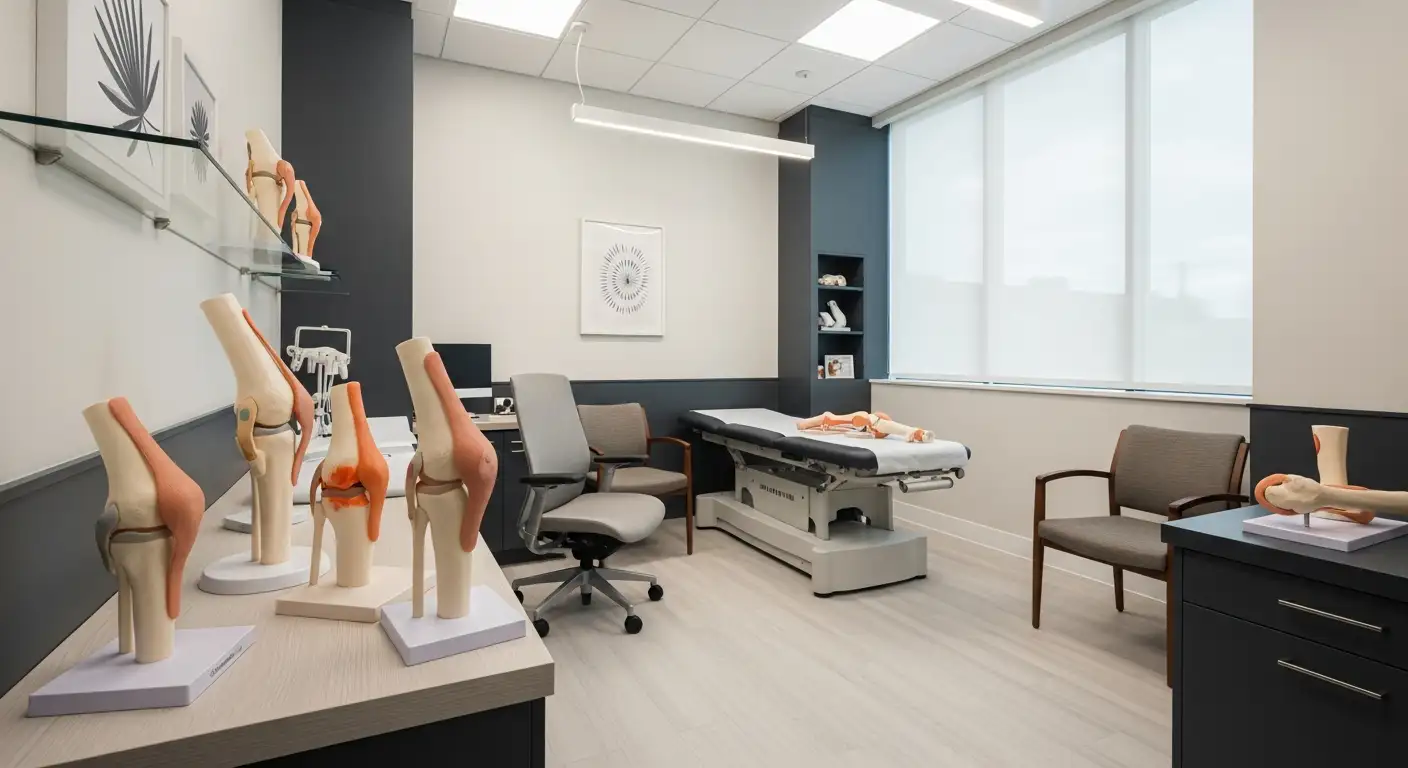When Knee Clicking Raises Questions
Knee clicking during squatting is a commonly experienced phenomenon that many attribute to harmless joint noises. However, for some, these sounds may signal underlying knee issues requiring attention. This article explores the nature of knee clicking, its possible causes, relevant symptoms to watch for, and the latest in medical and lifestyle interventions to manage associated knee pain, particularly focusing on osteoarthritis and injuries relevant to squatting movements.
The Anatomy and Common Causes of Knee Clicking

What is Crepitus and Why Does the Knee Click?
Knee clicking is medically known as crepitus. This common phenomenon frequently occurs during joint movement and is usually harmless. The primary mechanism involves tiny gas bubbles, mainly nitrogen, dissolved in the synovial fluid. When these bubbles collapse or pop—a process called cavitation—they produce the characteristic clicking or popping sounds. These events typically happen in both the tibiofemoral and patellofemoral joints of the knee.
Typical Reasons Behind Knee Clicking
Besides cavitation, several anatomical movements within the knee joint can cause clicking sounds. Tendons or ligaments may snap or glide over bony prominences during movement, such as the iliotibial band flicking over the femur, which is often linked to iliotibial band syndrome or runner's knee. Similarly, medial hamstring tendons moving past each other or the kneecap shifting in its groove can generate audible clicks, most often without pain or damage.
Conditions That Can Lead to Knee Clicking
Certain pathological conditions can cause or accentuate knee clicking, sometimes with discomfort or other symptoms:
- Meniscus Tears: Injuries from twisting motions can lead to painful clicking along with swelling, locking, or catching sensations.
- Patellofemoral Pain Syndrome: Inflammation and irritation under the kneecap result in pain and clicking due to improper mechanics or muscle imbalance.
- Plica Syndrome: A fold in the knee capsule called the plica can become inflamed, causing catching or clicking sensations.
- Baker’s Cyst: Swelling behind the knee can cause pressure and sometimes a clicking or popping feeling.
When to Be Concerned
While many noises in the knee are benign and painless, persistent clicking accompanied by pain, swelling, stiffness, or instability deserves medical evaluation. These symptoms may indicate underlying issues requiring treatment. Diagnostic ultrasound and imaging are useful to assess the structures dynamically and help pinpoint causes.
| Cause | Description | Typical Symptoms |
|---|---|---|
| Gas bubble cavitation | Popping of nitrogen bubbles in joint fluid during movement | Usually harmless, painless |
| Tendon/ligament movement | Snapping over bony landmarks (e.g., iliotibial band) | Noise during flexion/extension |
| Meniscus tears | Cartilage injuries often due to twisting | Pain, swelling, locking |
| Patellofemoral syndrome | Irritation beneath kneecap | Pain, clicking, instability |
| Plica syndrome | Inflamed knee capsule fold | Catching, clicking sensation |
| Baker’s cyst | Fluid-filled swelling behind the knee | Swelling, occasional clicking |
Understanding these causes helps differentiate normal joint noises from signs of injury or disease. Most knee clicking is harmless, but persistent or painful symptoms warrant professional assessment.
Distinguishing Harmless Knee Clicking from Symptoms of Concern

How can one differentiate between harmless knee clicking and symptoms that require medical attention?
Knee clicking, also known as crepitus, is commonly a harmless occurrence. It often results from tiny gas bubbles within the joint fluid popping or tendons snapping over bony prominence during movement. These noises typically cause no pain and do not predict any future joint problems.
However, when knee clicking is persistent and accompanied by other warning signs, it may signal underlying issues requiring medical attention. These symptoms include:
- Pain or discomfort in the knee
- Swelling around the joint
- Stiffness limiting the knee's mobility
- A sensation of instability or wobbliness
- Reduced range of motion
Such symptoms could indicate conditions like arthritis, meniscal tears, ligament injuries, or inflammation. For example, osteoarthritis involves cartilage breakdown causing pain, swelling, and cracking noises, whereas meniscal tears often result in locking or catching sensations.
Why is evaluating persistent knee clicking important?
Persistent or painful knee clicking should not be ignored as it may point to structural damage. Timely evaluation by a healthcare professional is essential to diagnose the cause and begin appropriate treatment. Diagnostic tools such as physical examination, imaging (X-rays, MRI), and sometimes ultrasound can identify specific knee problems.
When should you seek medical advice?
You should consult a doctor or physiotherapist if knee clicking is accompanied by any of the following:
- Ongoing pain or swelling
- Feelings of the knee giving way or instability
- Locking or inability to fully extend or flex the knee
- Stiffness affecting daily activities
Early diagnosis allows for effective management through physical therapy, medication, or in some cases surgical intervention, reducing the risk of further joint damage and improving quality of life.
In summary, while most knee clicking is benign and harmless, accompanying symptoms such as pain, swelling, instability, and limited motion require professional evaluation to rule out or address underlying knee conditions.
Diagnosing Knee Osteoarthritis and Related Conditions

How is osteoarthritis of the knee diagnosed by medical professionals?
Diagnosing knee osteoarthritis starts with a detailed clinical assessment. Medical professionals gather a thorough patient history focusing on symptoms like pain, stiffness, swelling, joint noises (crepitus), and any functional limitations. Physical examination aims to detect joint tenderness, swelling, deformities, and assess knee range of motion. Findings such as crepitus, reduced movement, and instability may signal underlying cartilage damage or joint degeneration.
Imaging plays a pivotal role, with X-rays being the primary diagnostic tool. X-rays can reveal hallmark signs of osteoarthritis including joint space narrowing, subchondral sclerosis (bone hardening beneath cartilage), and osteophyte (bone spur) development. These changes help stage the severity from minor to severe.
Magnetic Resonance Imaging (MRI) is utilized when detailed evaluation of cartilage, menisci, ligaments, and surrounding soft tissues is necessary, especially if symptoms don’t correlate clearly with X-ray findings or when surgical planning is considered.
Diagnostic ultrasound has gained importance for dynamically assessing knee structures during movement. It allows visualization of tendons, ligaments, plica folds, fluid collections like Baker’s cysts, and helps identify sources of clicking or popping noises in real time.
Joint fluid analysis is occasionally conducted to exclude inflammatory or infectious causes such as gout or septic arthritis. However, it is not a routine part of diagnosing osteoarthritis.
Together, these diagnostic approaches guide clinicians in identifying osteoarthritis and differentiating it from other joint disorders, enabling a tailored treatment plan.
Medical Treatments for Knee Pain Associated with Clicking and Osteoarthritis

What are the most effective medical treatments available for knee pain?
Managing knee pain, particularly when related to clicking or osteoarthritis, involves a range of treatments tailored to the condition's severity and underlying cause.
Conservative options form the first line of treatment. Physical therapy is critical, focusing on exercises to strengthen muscles around the knee and improve flexibility, which supports joint stability and reduces pain. Alongside therapy, nonsteroidal anti-inflammatory drugs (NSAIDs), including topical formulations, provide relief from swelling and discomfort.
Injections offer another layer of treatment. Corticosteroid injections can rapidly decrease inflammation, easing symptoms temporarily. Hyaluronic acid injections work to lubricate the joint, improve movement, and lessen pain. More recently, platelet-rich plasma (PRP) therapy has gained attention by leveraging the body's own healing factors to promote tissue repair.
Emerging therapies such as knee embolization and low-dose radiation therapy show promise in reducing joint inflammation and managing chronic pain, though these are still evolving in clinical practice.
For cases unresponsive to non-invasive approaches or that involve advanced joint damage, surgical options come into play. Arthroscopy may be used for minor repairs, while osteotomy can realign the knee to relieve pressure. In severe osteoarthritis with substantial cartilage loss, knee replacement surgery offers significant pain relief and restores function.
Effective treatment plans consider symptom severity, patient activity level, and specific diagnosis to provide personalized care and improve quality of life.
When Surgery is Necessary for Knee Osteoarthritis Patients

When is surgery considered necessary for patients with knee osteoarthritis?
Surgery for knee osteoarthritis is generally reserved for cases where conservative treatments, such as nonsteroidal anti-inflammatory drugs (NSAIDs), physical therapy, and weight management, have failed to relieve symptoms after at least six months. Patients often consider surgery when pain severely interferes with daily activities like walking, sleeping, or working. Additional signs indicating surgery may include significant functional impairment, joint instability, and structural damage visible on imaging studies.
Criteria such as symptom severity and failed conservative treatment
The decision to proceed with surgery is primarily based on symptom severity and the ineffectiveness of non-surgical interventions. Persistent pain, stiffness, swelling, and difficulty in joint mobility despite treatment are key criteria. Moreover, complications like loose joint prostheses or fractures can prompt surgical intervention. Patient health, age, and activity level are also considered to personalize treatment plans.
Types of surgical procedures used
Common surgical options include:
- Arthroscopy: A minimally invasive procedure used for diagnosing and sometimes repairing meniscal tears or cartilage damage.
- Osteotomy: Realigns the bones to reduce pressure on the damaged part of the knee.
- Total or partial knee replacement (arthroplasty): Replaces damaged joint surfaces with prosthetic components, usually reserved for advanced osteoarthritis.
Each surgery has specific goals and is selected based on disease severity and patient needs.
Goals and outcomes of surgery
The primary goals of knee surgery in osteoarthritis patients are to alleviate pain, restore joint function, and improve quality of life. Most patients experience significant pain reduction and better mobility post-surgery. However, surgery also carries risks and requires rehabilitation to optimize outcomes. Long-term success depends on appropriate patient selection and adherence to postoperative care.
| Aspect | Description | Notes |
|---|---|---|
| Indications for surgery | Severe pain, failure of conservative therapies, functional impairment | Symptoms often interfere with daily life |
| Key surgical procedures | Arthroscopy, Osteotomy, Total/Partial Knee Replacement | Choice depends on severity and damage |
| Goals of surgery | Pain relief, restored function, improved quality of life | Requires rehabilitation after surgery |
| Outcome considerations | Patient health, age, lifestyle, adherence to post-op protocols | Influences recovery and long-term success |
This approach ensures surgery is performed only when necessary and maximizes benefits for knee osteoarthritis patients.
Lifestyle Modifications to Support Knee Health and Manage Osteoarthritis
What lifestyle changes can help manage knee osteoarthritis alongside medical treatments?
Managing knee osteoarthritis effectively includes several important lifestyle modifications that complement medical treatments. One of the most effective changes is weight management. Maintaining a healthy weight reduces the stress and load on knee joints, which can lower pain and slow disease progression.
Low-impact exercises such as swimming, walking, and cycling help strengthen the muscles around the knee without causing further joint damage. Strengthening these muscles enhances joint stability and mobility. Exercise routines may also include specific stretches like foam rolling and quad stretches that improve knee flexibility and reduce clicking sensations.
Selecting proper footwear with good arch support and cushioning can alleviate abnormal joint stress during daily activities. Additionally, ergonomic adjustments at work or home — such as using chairs with proper support or ensuring work surfaces are at comfortable heights — help maintain joint alignment and minimize undue strain.
Nutrition plays a supportive role through an anti-inflammatory diet rich in fruits, vegetables, omega-3 fatty acids (found in foods like salmon, walnuts, and flax seeds), and whole grains. These foods help reduce systemic inflammation and may support overall joint health.
Preventing injury is crucial: adopting safe movement techniques during activities and promptly managing any acute knee injury using the RICE method (Rest, Ice, Compression, Elevation) can prevent further joint damage. In addition, rehabilitation practices such as physical therapy can address muscle imbalances, improving joint function and reducing symptoms.
Supportive therapies include using knee braces for added stability and hydrotherapy to provide gentle resistance for muscle strengthening without joint stress. Combined, these lifestyle changes help optimize symptom control, maintain mobility, and improve quality of life for individuals with knee osteoarthritis.
Exercises and Nutritional Support to Enhance Knee Function
How can exercises and dietary choices help improve knee clicking and pain symptoms?
Targeted exercises play a vital role in improving knee mobility and reducing clicking sounds. Techniques such as foam rolling help relax tight muscles and improve tissue flexibility around the knee. Deep squat stretches increase the range of motion, while quad stretches with a rope specifically target quadriceps tightness, promoting better patellar tracking. The knee flexion gapping stretch also helps relieve stiffness, contributing to smoother joint movement and less clicking.
In addition to movement-based therapies, nutritional support can ease joint discomfort. Incorporating anti-inflammatory foods such as turmeric into the diet can help reduce inflammation. Omega-3 fatty acids, abundant in salmon, walnuts, flax seeds, and chia seeds, support joint tissue health by lowering inflammatory markers.
Strengthening muscles around the knee is crucial. Stronger surrounding muscles stabilize the knee, preventing abnormal shifts that can cause clicking and pain. Overall, a combination of focused exercises and a diet rich in anti-inflammatory nutrients promotes improved knee function and comfort.
Proactive Management of Knee Clicking and Pain
Knee clicking during squatting is often benign, but persistent or painful crepitus warrants medical attention to identify underlying conditions such as osteoarthritis or meniscal injury. Accurate diagnosis through clinical and imaging evaluation enables targeted treatment ranging from conservative therapies like physical rehabilitation and anti-inflammatory medications to advanced biologic injections or surgery for severe disease. Coupling medical management with lifestyle adjustments, including weight control, exercise, and dietary changes, optimizes joint health and function. Awareness and early intervention empower individuals to maintain active lifestyles and mitigate progression of knee disorders causing clicking and pain.
References
- Is Knee Clicking Harmless Or A Red Flag?
- Why do your knees click and should you worry?
- Knee Osteoarthritis: Symptoms, Stages, Causes & Treatment
- Is It Bad If Your Knees Crack When You Squat or Bend?
- Knee Clicking - Why Does My Knee Pop?
- 4 Easy Exercises That Will Fix Your Knee Click When You ...
- Knee Crepitus | SCOI
- Knee joint replacement - series—Indications





